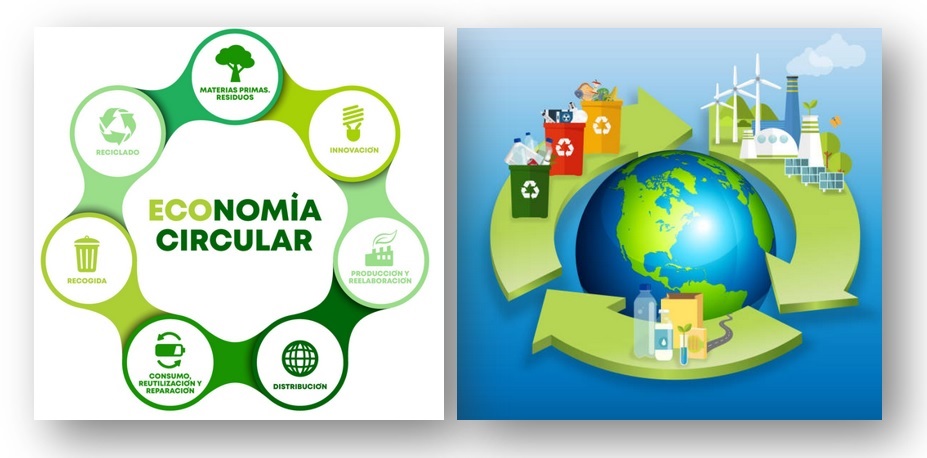Business innovation and the circular economy intertwine to drive a sustainable future. Visionary companies are adopting economic models, reusing resources and minimizing waste. Through innovation, products and services that generate long-term value are being created, promoting efficiency and reducing environmental impacts. These initiatives drive the transition towards a more circular economy, where the life cycle of products is maximized and the generation of waste is minimized. This synergy between innovation and the circular economy drives sustainable growth and the creation of new business opportunities.
In a world increasingly aware of the need to address resource and environmental challenges, the circular economy has become a key approach to achieving a sustainable transition. This strategy is based on the principle of keeping resources in use for as long as possible, minimizing waste generation and maximizing their value. In the energy sector, the adoption of this type of economics offers numerous benefits to companies, including the reduction of costs, the improvement of the efficiency in the use of resources, and the reduction of environmental risks associated with waste disposal. In this article, we will explore how the circular economy is helping companies to become more competitive and meet the challenges of an economy in transition.

Cost reduction
The circular economy encourages an innovative approach to resource management, allowing companies to optimize their economic and environmental performance at the same time. By implementing practices such as reuse, recycling, and remanufacturing, companies can reduce reliance on virgin resources, which translates into significant production cost savings. Additionally, by minimizing waste generation and making the most of existing materials, companies can avoid additional expenses associated with waste treatment and disposal.
Improved efficiency in the use of resources
The circular economy drives the adoption of more efficient practices in the use of resources, allowing companies to maximize the value of each resource used. This implies the implementation of strategies such as the design of modular products, the implementation of remanufacturing systems and the adoption of service-based business models. By designing products with the ability to be repaired, upgraded, and reused, companies can extend the life of products and minimize the need for additional resources. Also, the transition to service-based business models, where access to products rather than ownership is provided, encourages efficient use of resources while meeting customer needs.
Decreased environmental risks
Improper waste disposal poses a significant risk to the environment and human health. The circular economy addresses this challenge by promoting the adoption of more sustainable waste management practices. By encouraging recycling and reuse, the volumes of waste that end up in landfills or incinerators are reduced, which in turn decreases soil, water and air pollution. In addition, it stimulates business innovation in the creation of more efficient recycling solutions and in the recovery of by-products and waste as resources for other industrial processes. This not only contributes to the protection of the environment, but can also generate new business opportunities and promote the regenerative economy.
Promotion of business innovation
This new concept of economics drives business innovation by challenging traditional models of linear production and consumption. By adopting a circular approach, companies are forced to rethink the way they operate, encouraging creativity and the search for more sustainable solutions. This can lead to the development of new products, services and technologies that conform to the principles of the circular economy. Business innovation in this context not only boosts competitiveness, but also contributes to mitigating climate change and reducing the carbon footprint.
Carbon footprint reduction
This economy plays a crucial role in reducing the carbon footprint of companies. By minimizing the consumption of resources and energy, and promoting efficiency in their use, greenhouse gas emissions associated with the production and management of waste are reduced. Additionally, by adopting renewable energy practices and seeking more sustainable transportation solutions, businesses can further reduce their environmental impact. Combined with the transition to clean energy sources, it plays a critical role in mitigating climate change and building a more sustainable future.
Conclusions
The circular economy offers a series of benefits to companies in the energy sector in a world in transition towards sustainability. By reducing costs through efficient use of resources and eliminating waste, improving efficiency in the use of resources, reducing environmental risks associated with waste disposal, promoting business innovation, and reducing carbon footprints, companies they can increase their competitiveness and contribute to sustainable development.
The adoption of circular principles implies a paradigm shift that requires collaboration between different actors, including governments, companies and consumers. By implementing this economy, companies can lead the transformation towards a more prosperous and sustainable future for all.
References
Own source

